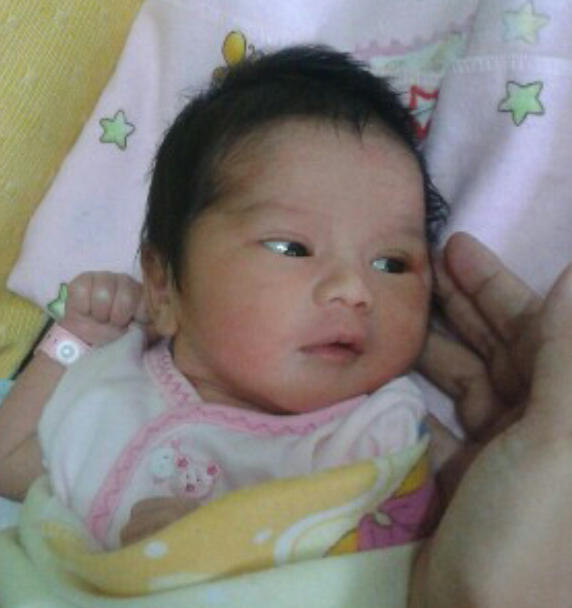The Children's Hour
For months yoga has been about pregnancy. Since May I've been watching my teacher's belly expand. At first, I kept staring at a tiny curve in her abdomen and wondering, "Is she? She has to be. But is she really? Maybe I'm imagining things." There isn't a lot to think about when you're in a long, difficult pose, and my eyes always seemed to gravitate to the gravida! What a relief when she finally announced her pregnancy, and I could find some other way for my mind to wander during class.
Lately, it seems that every time I go to yoga (on Tuesdays and Thursdays), I see not only her sizable abdomen but also those of at least two other pregnant women. The composition of the class always changes, and I rarely see the same pregnant woman twice. And though it's not a prenatal class—not in the least—there's a constant supply of expectant women, which is odd in a group of about 15 students.
This week the postpartum owner showed up (taking a rare break from time with her newborn) and commiserated with a student about how horrid it is to have one's hair fall out in clumps after giving birth.
I began to wonder if I had taken a wrong turn somewhere and come to a maternity ward instead of a yoga studio.
On top of that, my graphic designer Tiara just gave birth to a lovely girl named Yuna, which is why we've been on a brief hiatus with essay publication (though production should resume next week if Tiara is feeling up to it).
And that's not all! When I described my bodily woes to a massage therapist last weekend, he groaned and said, "Oh, you're bringing up really uncomfortable memories of when I had a uterus in a past life."
With this bright spotlight on the "child's palace" (子宮, しきゅう: uterus, child + palace), or "the baby's room," as my Chinese acupuncturist says, let's do a quiz about kids. I'll uniformly define 子 and 童 as "child" in the breakdowns, though this may change in a bit:
| 1. 骨子 (こっし) | bones + child | a. interest |
| 2. 利子 (りし) | profit + child | b. gene |
| 3. 遺伝子 (いでんし) | to leave behind + to transmit + child | c. naivete |
| 4. 童心 (どうしん) | child + mind | d. main point |
To block the answer, here's a photo of Yuna. She's already proving most helpful!

Photo Credit: Tiara Marina
1.d. 骨子 (こっし: bones + suffix for an abstraction) means "main point," as well as "substance" and "gist." As you can see from the breakdown here, this 子 serves as a "suffix for an abstraction," says Halpern. According to one site, the 骨 in 骨子 represents the "bones" of something, which is to say its "framework" or "skeleton." Kojien indicates that 骨子 originally meant "bones" before acquiring these figurative meanings.
2.a. 利子 (りし: interest + interest) means "interest (on money)." Interest is the offspring of money, says Halpern, who defines both 利 and 子 as "interest" in this context.
3.b. 遺伝子 (いでんし: to leave behind + to transmit + small entity) means "gene." The first two kanji combine to mean "heredity." And Halpern defines this 子 as "small entity."
4.c. 童心 (どうしん: child + mind) means "naivete," as well as "child's mind."
Did you notice that 子 did not mean "child" in any of the three quiz words that contained it?! The moral of the story is that if you're looking for a child, you might have more luck with 童 than with 子. Or just come to my yoga class!
Postscript: After writing this, I went to watch TV for awhile. In a relatively short time I saw an ad for the movie Knocked Up, then an episode of Friends in which Rachel and Ross argue over baby names.

Comments